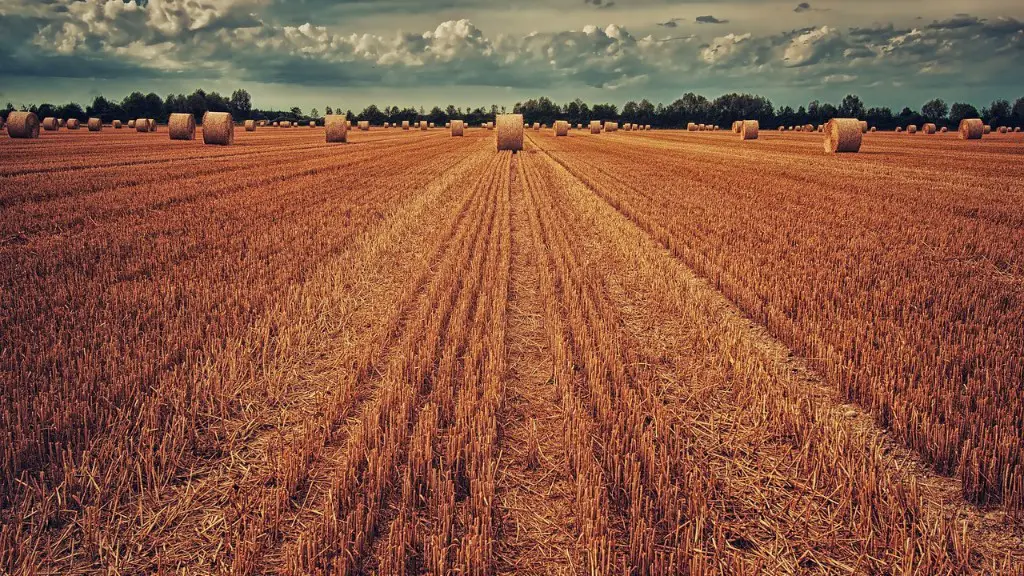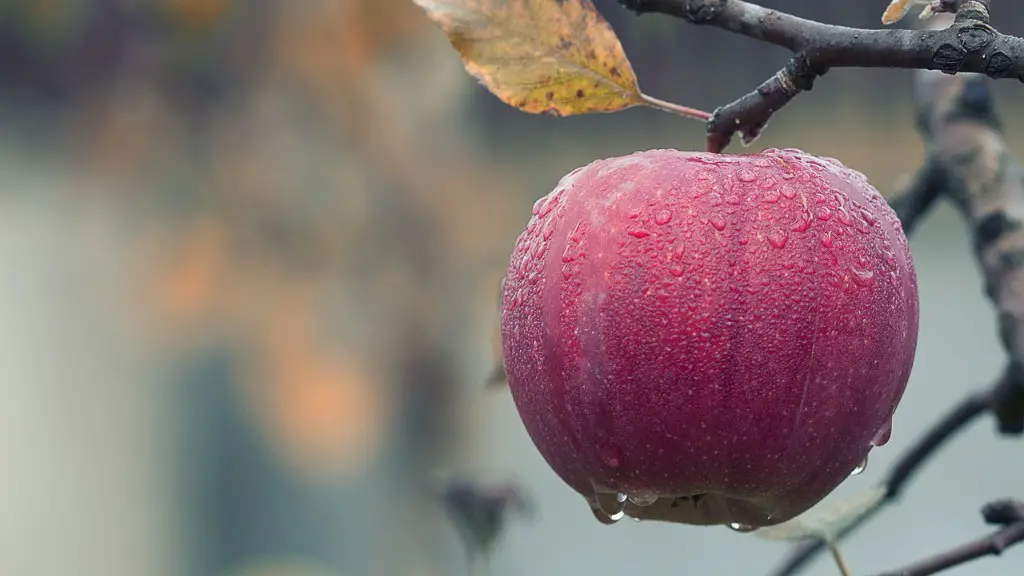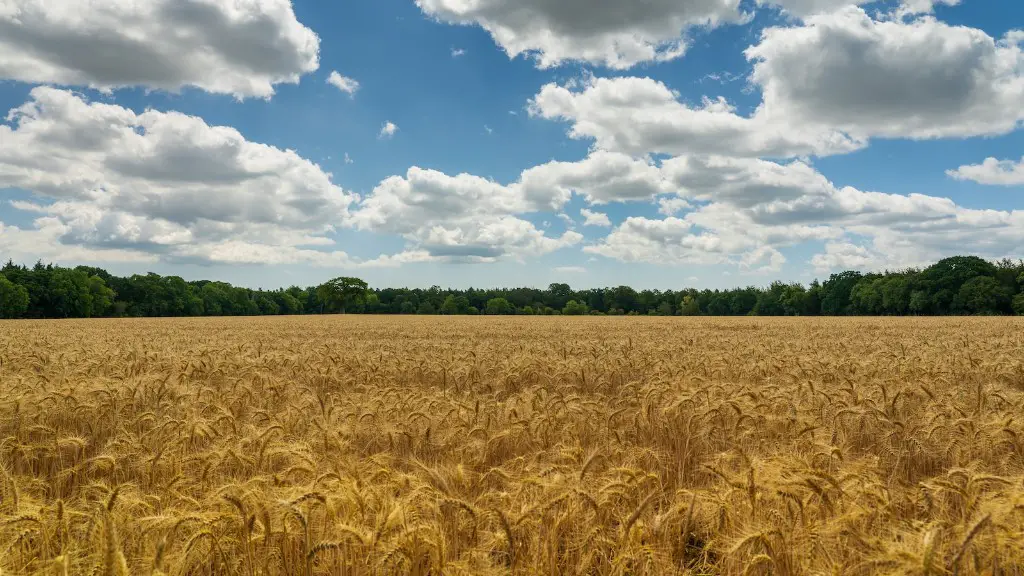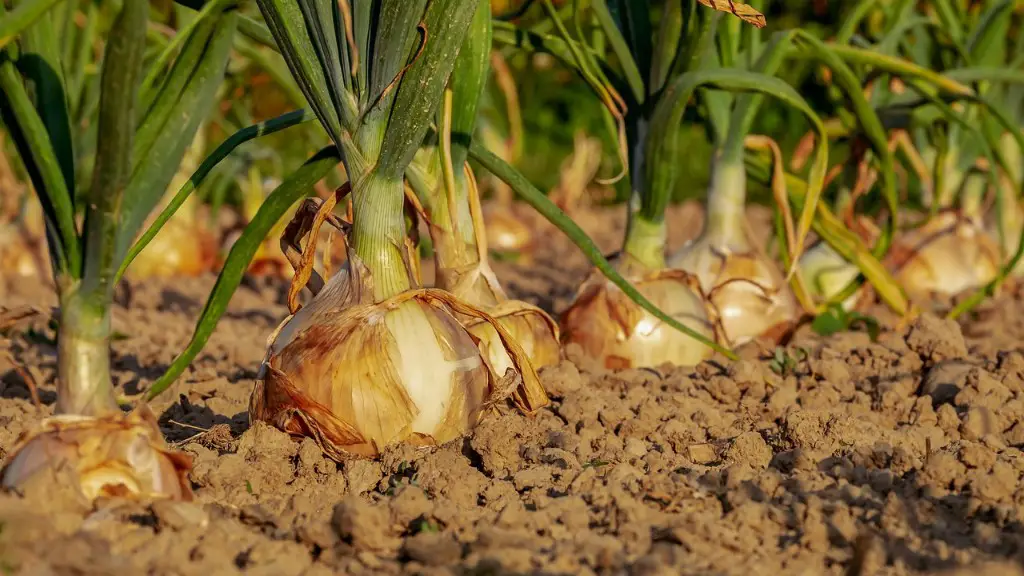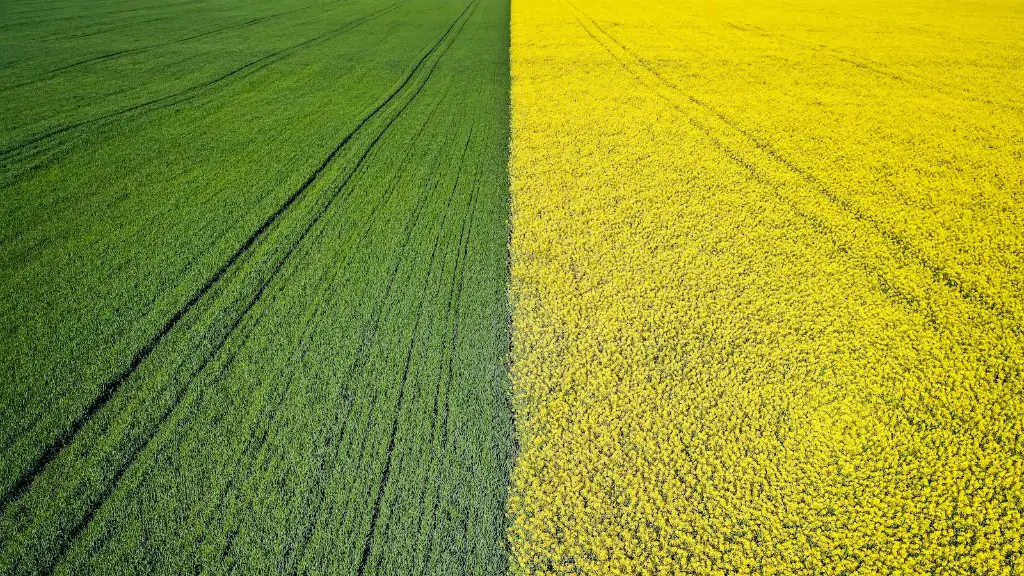Climate can highly affect agriculture through temperature, amount of rainfall, and sunlight. If it is too hot or too cold, crops may not grow properly. If there isnot enough rainfall, then the plants will not have enough water to survive and grow. If there is too much rainfall, the crops may rot. Lastly, if there is not enough sunlight, the plants will not be able to produce food for themselves through photosynthesis. All of these conditions must be just right in order for crops to grow properly.
The climate can affect agriculture in many ways. The most obvious way is that certain climates are more conducive to growing certain crops than others. For example, tropical regions are generally more suitable for growing fruits and vegetables than temperate regions. Another way that climate can affect agriculture is by affecting the amount of rainfall or sunlight that a particular region receives. For example, a region that experiences a long period of drought is likely to have lower crop yields than a region that receives sufficient rainfall. Additionally, extreme weather events such as floods or wildfires can damage crops and agricultural infrastructure.
How does climate impact agriculture?
Agricultural producers are greatly affected by changes in ozone, greenhouse gases and climate change. Temperature changes can cause habitat ranges and crop planting dates to shift, and droughts and floods due to climate change may hinder farming practices. These changes can have a significant impact on the viability of agricultural production, and producers must be aware of and adapt to these changes in order to maintain their operations.
Climate change is expected to have a number of impacts on agriculture and food supply, including soil erosion, decreased crop yields, and heat stress. All of these impacts can have serious consequences for the sustainability of food production.
Where does climate change affect agriculture the most
Climate change is already having an impact on agriculture in the United States. Flooding is becoming more common in agricultural regions of the country, as well as in coastal areas. This is having a negative impact on crop yields and farm profitability. In addition, climate change is expected to increase the incidence of pests and diseases, which will further reduce crop yields. As a result, farmers will need to adapt their management practices to deal with these new challenges.
Mean values for precipitation are not projected to change, but there are likely to be more extreme weather events that will reduce crop yields. Heavy rain, hail storms and flooding can physically damage crops. Extremely wet conditions in the field can delay planting or harvesting.
Does climate change destroy agriculture?
Climate change is already affecting agricultural production in NSW and is likely to continue to do so. Changes in temperature and rainfall patterns are resulting in new pests and diseases, and changing the areas that are suitable for farming. This is likely to have a negative impact on crop yields and the quality of produce, as well as on the viability of farms. The NSW government is working to help farmers adapt to the changing conditions, but it is important for all of us to be aware of the potential impacts of climate change on agriculture.
Negative impacts of global warming include reduced crop quantity and quality due to the reduced growth period following high levels of temperature rise; reduced sugar content, bad coloration, and reduced storage stability in fruits; increase of weeds, blights, and harmful insects in agricultural crops; reduced land . All of these impacts have serious consequences for the food security of a region or country
What are the 5 factors that affect agriculture?
There are many factors that affect the distribution of agriculture. One of the most important is temperature. Most plants cannot grow if the temperature falls below 6°C or the soil is frozen for five consecutive months. This limits agriculture to areas where the climate is relatively mild. The growing season is another important factor. This is the number of days between the last frost of the spring and the first of the autumn. In areas with a short growing season, only certain crops can be grown. Altitude is another important factor. Crops can only be grown at certain elevations, depending on the plant. Finally, rainfall is also a critical factor. Too much or too little rain can ruin a crop.
Climate change is already making it more difficult for farmers to grow crops and access water. As weather becomes more volatile and extreme events like floods and droughts become more common, it will only become more difficult to grow crops and access water. This will limit the availability of food, and lead to higher food prices. Weeds, pests, and fungi will also thrive in these conditions, further reducing crop productivity.
What are 3 problems of agriculture
If we are to address the triple challenge of feeding a growing population, providing a livelihood for farmers, and protecting the environment, we must do so together. We cannot make sustainable progress in any of these areas if we do not work together to address all three challenges.
Farmers are increasingly struggling to deal with environmental issues beyond their control. Soil quality, water quality, climate, and terrain are just a few of the environmental issues that may impact profits and productivity for farmers in any given growing season. These issues are often compounded by the fact that farmers are already operating on slim margins.
As the climate continues to change, farmers will need to adapt their practices to cope with more extreme weather conditions. Water shortages are likely to become more common, so efficient irrigation systems will be critical. Soil health is also likely to decline, so farmers will need to focus on soil conservation and regeneration.
These are just some of the challenges that farmers will face in the coming years. It is vital that we support them in finding solutions that work for their specific circumstances.
What are 3 challenges facing agriculture in the future?
Farmers and livestock producers are facing uncertainty over three primary issues: agricultural trade, tax reform and the new farm bill. Agricultural trade is a major issue because it affects farmers’ ability to sell their products. Tax reform is another major issue because it could affect farmers’ ability to deduct expenses. The new farm bill is also a major issue because it will affect farmers’ subsidies and other assistance.
Small-scale, organic farming focuses on diversified production, manual labor, and uses renewable resources. While this system has lower production levels, it does not contribute to climate change, pollute air and water, or deplete soil fertility.
What are at least 3 factors that affect farming agriculture
The four environmental factors that influence the extent of crop agriculture are terrain, climate, soil properties, and soil water. These factors combine to allow specific crops to be grown in certain areas.
Terrain includes information on the relief of the land, such as the presence of hills, mountains, valleys, and plains. This information is important because it affects the amount of sunlight that an area receives and the drainage of water from the land.
Climate includes information on the average temperature and precipitation for an area. This information is important because it affects the types of crops that can be grown in an area.
Soil properties include information on the texture, structure, and fertility of the soil. This information is important because it affects the ability of the soil to support the growth of crops.
Soil water includes information on the availability of water for plants. This information is important because it affects the growth of crops.
The high cost of fuel and fertilizer impacted farmers and ranchers last year. The cost of fuel rose by more than 60% from 2021 to 2022, while the cost of fertilizer rose by more than 20%. This posed a significant challenge for farmers and ranchers, who had to navigate the fall harvest season with rising input costs.
Why agriculture is declining?
The declining trend in agriculture is due to many reasons, including insufficient public investment for agrarian development, inadequate access to institutional credit, and frequent droughts and floods. In order to reverse this trend, it is essential to invest more in agriculture, improve access to credit, and mitigate the effects of droughts and floods.
Climate change can have a big impact on food crops. Soil temperature and moisture levels can change, which can make it harder for crops to grow. Organisms that help crops grow may not be as plentiful, and pests may become more common. This can make it hard to produce enough food to feed people.
Warp Up
Climate can affect agriculture in a number of ways. Extreme weather conditions can lead to crop failure, as can prolonged periods of drought or excessive moisture. Changes in temperature can also adversely affect crop yields, as can changes in atmospheric carbon dioxide levels. All of these factors can have a serious impact on agricultural production and food security.
Climate change can imposes significant risks to global agriculture production due to the increased intensity and frequency of extreme weather events. These events can disrupt critical growing seasons, damage crops, and lead to livestock losses. Additionally, climate change can cause changes in soil moisture and rainfall patterns, which can adversely affect crop yields. As a result, climate change has the potential to cause significant food insecurity around the world.
